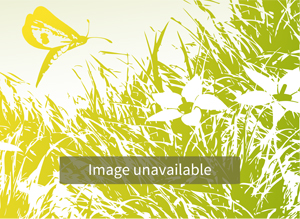
OCCGR is a large picturesque grassland reserve with extensive views over the township of Cooma, surrounding grasslands and distant forest landscapes. At the right time of day the golden landscapes of grasses provide spectacular image of what Australian montane and temperate grasslands would have looked like. The reserve is dominated by kangaroo and river tussock snow grasses, and contains many other species of grasses, wildflowers and sub-shrubs found in grasslands. The reserve adjoins other grassland sites which contain similar species.
OCCGR overlooks the town of Cooma in Southern NSW.
There is a small parking area at the end of the track leading up from Polo Flat Rd, at the top of Radio Hill, which provides an excellent view over the reserve, the township of Cooma and extensive surrounding landscapes.
Brett Jones, Noxious Weeds Officer, Cooma Monaro Shire Council (brett.jones@cooma.nsw.gov.au) and Margaret Ning (margaretning1@gmail.com), Friends of Grasslands.
The reserve was part of the originally much larger Cooma Town Common. The Common was "revoked from commonage" in 1964 and subdivided for various purposes, OCCGR being "reserved for reforestation" while the other parts were leased for grazing and other purposes, and some sold. A radio-telephone tower was built atop the hill and the area became known as Radio Hill. As part of its contribution to Worldwide Fund for Nature’s (WWF) Monaro Grasslands Project and subsequent establishment of the Monaro Grasslands Conservation Management Network, in 1999 Friends of Grasslands applied for a grant from WWF to conserve the grassland, particularly by completing the boundary fencing and removing woody weeds. With the agreement of Cooma-Monaro Shire Council the area was declared a grassland reserve and was named Old Cooma Common Grassland Reserve.
OCCGR is a large reserve containing extensive areas of Natural Temperate Grassland of the South Eastern Highlands, a threatened ecological community, and a diversity of plants, including threatened species the Monaro Golden Daisy (Rutidosis leiolepis), Hoary Sunray (Leucochrysum albicans) and Australian Anchor Plant (Discaria pubescens), and many other uncommon grassland species of grass, forbs and sub-shrubs.
Spectacular scenery and grassland landscapes, Monaro Golden Daisy, Hoary Sunray, and many other plants, particularly in November.
OCCGR is managed by Cooma Monaro Shire Council with significant input from Friends of Grasslands. The Council has established a Section 355 Management Committee with representatives from Council, Friends of Grasslands and members of the community. A management plan for the site was developed some years ago. Under the initial grant acquired by Friends of Grasslands the reserve was fenced to exclude unwanted livestock; since then there has been very little grazing apart from a 'resident' mob of kangaroos. The main threats to the site are African lovegrass, St John's wort, re-emerging woody weeds, and many other weed species such as vipers bugloss and great mullein. Over the years Friends of Grasslands and or Council has successfully applied for grants to hire professional contractors to control love grass and wort; Council has also used its own resources to control these weeds. Friends of Grasslands has held 38 working bees, involving 320 volunteers and 2200 hours to control woody and other weeds. Several years ago Council applied for a grant to provide internal fencing and to arrange for conservation grazing as a way to manage the site for its biodiversity values and reduce the weeding effort; but could not obtain approval from the Office of Environment and Heritage to go ahead with this project. A more recent grant was obtained to install interpretive signage and to fence out the access road to restrict vehicular access. And even more recently, Friends of Grasslands has acquired funding for three years to monitor and control lovegrass and wort at the site and two adjoining sites to protect the populations of Monaro Golden Daisy.
Acaena ovina, Acetosella vulgaris, Ailanthus altissima, Asperula conferta, Austrostipa bigeniculata, Austrostipa scabra, Bossiaea riparia, Bothriochloa macra, Brachyscome rigidula, Bromus molliformis, Bromus rubens, Bulbine bulbosa, Carex bichenoviana, Carthamus spp., Centaurium erythraea, Chrysocephalum apiculatum, Chrysocephalum semipapposum, Cirsium vulgare, Convolvulus angustissimus, Conyza spp., Craspedia variabilis, Crassula sieberiana, Crataegus monogyna, Cullen tenax, Dianella longifolia, Dichelachne spp., Discaria pubescens, Diuris behrii, Dysphania pumilio, Echium plantagineum, Echium vulgare, Einadia nutans, Elymus scaber, Enneapogon nigricans, Epilobium crinitum, Eragrostis curvula, Erodium cicutarium, Erodium crinitum, Erodium spp., Geranium solanderi, Hypericum perforatum, Hypochaeris radicata, Juncus spp., Leptorhynchos squamatus, Leucochrysum albicans, Linaria arvensis, Medicago sativa, Melicytus sp., Oenothera stricta, Oxalis perennans, Panicum effusum, Petrorhagia nanteuilii, Phalaris aquatica, Pimelea curviflora, Pimelea glauca, Plantago hispida, Plantago lanceolata, Plantago spp., Poa meionectes, Poa pratensis, Poa sieberiana, Poaceae indeterminate, Potentilla recta, Pyracantha angustifolia, Pyracantha spp., Rosa rubiginosa, Rubus fruticosus, Rumex brownii, Rumex dumosus, Rutidosis leiolepis, Rytidosperma laeve, Rytidosperma spp., Salvia verbenaca, Scleranthus diander, Senecio quadridentatus, Stackhousia monogyna, Taraxacum officinale, Themeda australis, Tragopogon spp., Trifolium spp., Velleia paradoxa, Verbascum thapsus, Verbascum virgatum, Vittadinia cuneata, Vittadinia spp., Vulpia spp., Wahlenbergia spp.
No thorough fauna surveys have been conducted. Brown Snakes, Skinks and many bird species have been sighted.